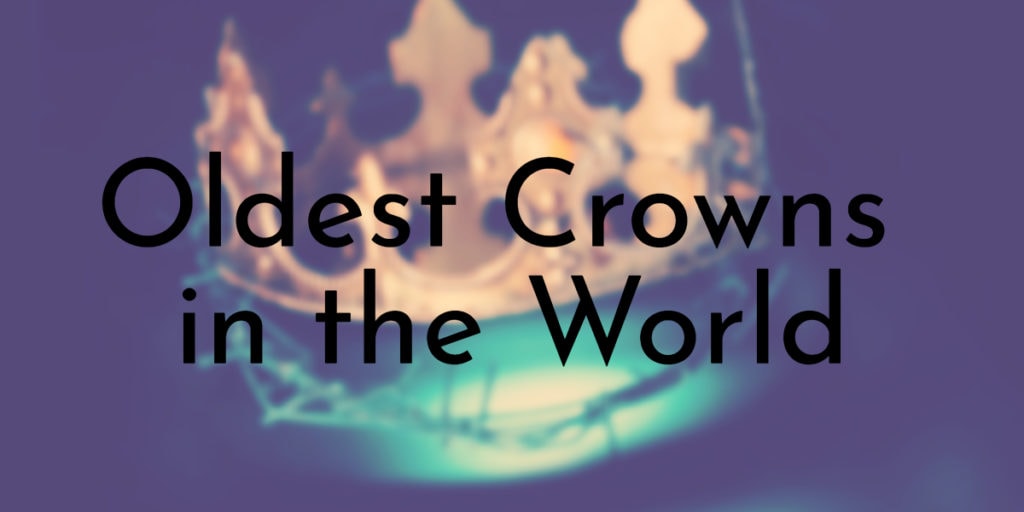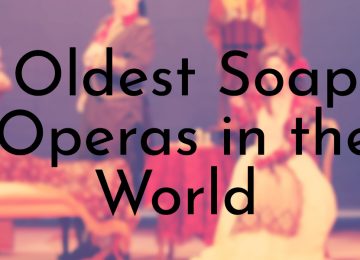Throughout history, a crown has been one of the most important symbols of power, royalty, and nobility. Used to adorn heads as far back as Ancient Egypt, ancient crowns were made from various materials such as gold and silver.
Though in the early eras of history, the crown was worn only by kings, some queens also used them at certain times. The crowns in the history of mankind have changed over time, and many of them are located in different countries around the world.
So, if you’re someone who wants to know more about ancient stuff, here is a list of some of the oldest crowns in the world, discussing their origins, uses, styles, and more.
10. The Helmet of Skanderbeg
Year Established: 1460
Origin Country: Albania
Status: Kept in the Kunsthistorisches Museum
Material Used: Steel, gold, bronze, copper
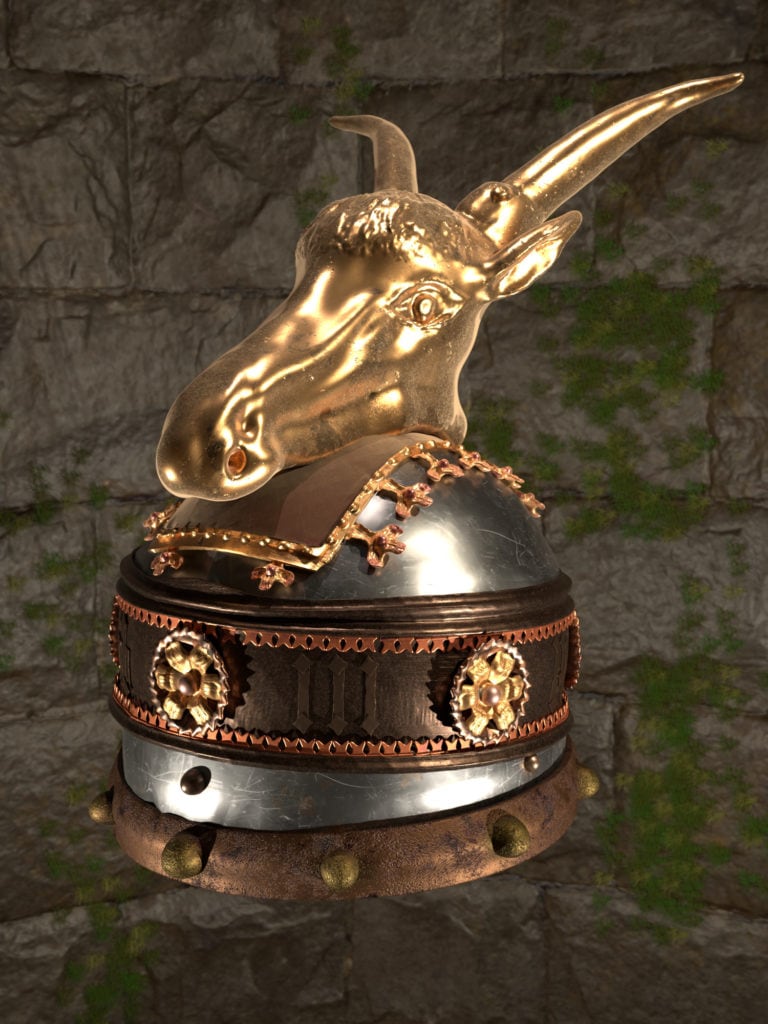
The white metal helmet, Skanderbeg, is embellished with a gold strip. The bronze head of a goat with horns that are likewise coated with gold rests on top of it. It is roughly 3 kg in weight. The arms of Skanderbeg were the goat’s head.
Following the Ottoman Empire’s colonization of Albania, the crown was stolen from the country. Eventually, the Italian noble family known as the Habsburg dynasty inherited the throne.
Did You Know?
The monograms around the crown JN * PE * RA * TO * RE * BT mean “Jesus of Nazareth bless you, Prince of Mat, King of Albania, Terror of the Ottomans and King of Epirus.”
9. Monomakh’s Cap
Year Established: late 13th century to 14th century
Origin Country: Russia
Status: Kept in the Kremlin Armory, as part of the Diamond Fund
Material Used: Gold, pearls, rubies, and emeralds
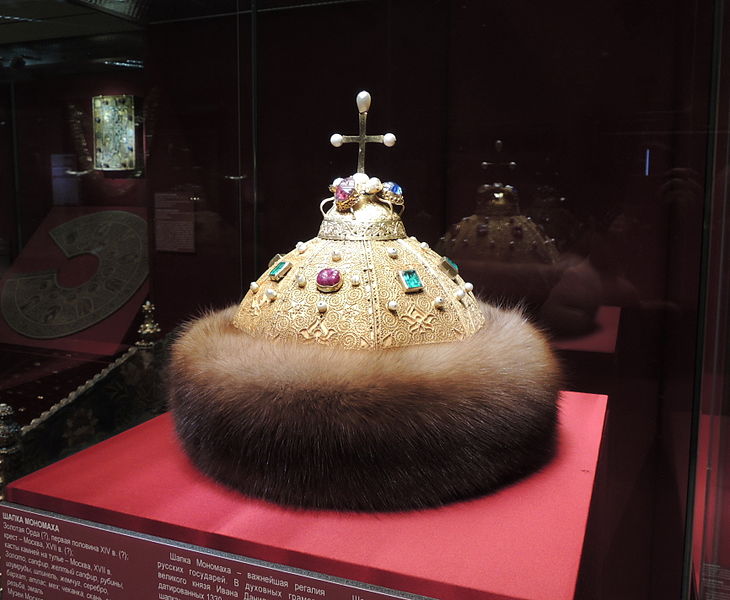
Known as Monomakh’s Cap, it is an eight-sectored piece of gold filigree skullcap that is lavishly embellished with a scrolled gold overlay, pearls, rubies, and emeralds inlaid, and sable trim.
This most prominent artifact of the Grand Princes and Tsars of Russia is also a great illustration of how the Kazans and Russians interacted culturally. The earliest Russian crown held in the Kremlin, Moscow, was manufactured sometime in the late 13th or early 14th century.
Did You Know?
One of the emblems of Russian autocracy is the Monomakh’s Cap, also known as the Golden Cap, a crown that was worn by Russian kings.
8. The Crown of Saint Wenceslas
Year Established: 1347
Origin Country: Bohemia (Czech Republic)
Status: Kept in Prague Castle
Material Used: Gold and a variety of precious stones
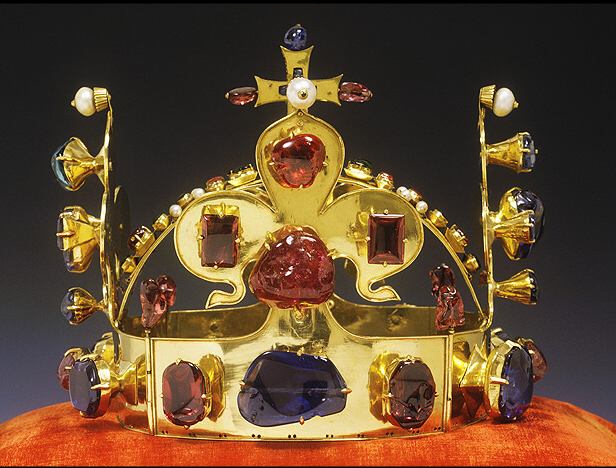
The Saint Wenceslas Crown, a piece of the Bohemian Crown Jewels, was crafted in 1347. Eleventh-century Bohemian ruler and Holy Roman Emperor Charles IV of the House of Luxembourg bestowed the crown on St. Wenceslas, the nation’s first patron saint.
The St. Wenceslas Crown includes 91 precious stones and 20 pearls, set in 21 to 22 carat gold. The crown weighs two and a half kilos and features two hoops with an elevated cross at the junction.
Did You Know?
The crown, which is a personal possession of St. Wenceslas, and may only be worn by a rightful Bohemian monarch during his coronation. Hence, according to an old Czech tradition, any imposter who wears it is bound to die within a year.
7. Queen’s Crown
Year Established: 1320
Origin Country: Poland
Status: Destroyed in 1809
Material Used: Gold
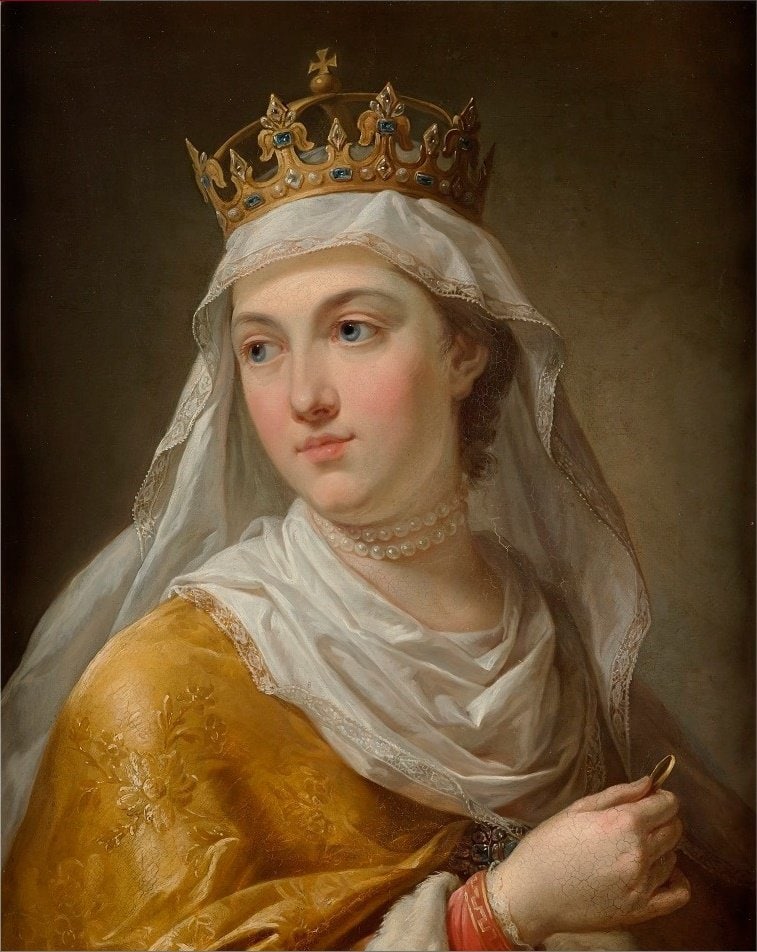
The main insignia of the Polish Queens was established in 1320 for Jadwiga of Kalisz, the wife of Wadysaw I the Elbow-high, in preparation for her coronation as Queen consort of Poland. From that point on, it was used until the end of the 17th century.
The Queen’s Crown is a gothic crown made entirely of pure gold with 10 bound pieces, crested with heraldic flowers, and set with priceless stones.
The crown had 474 diamonds, sapphires, emeralds, pearls, and other priceless gems, according to the final inventory of the Crown Treasury in 1792.
Did You Know?
In 1794, Prussian forces raided the Wawel Castle and stole the crown, which ended up in the Berlin collections of the Hohenzollern family.
6. The Crown of Charlemagne
Year Established: 10th to 11th century
Origin Country: France
Status: Destroyed in 1793
Material Used: Gold and iron
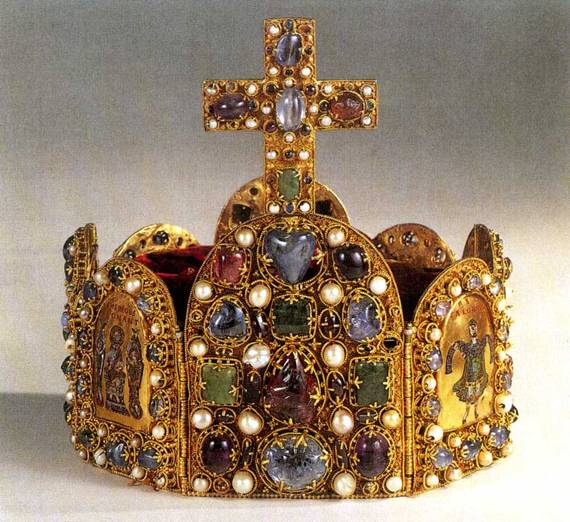
The Imperial Crown, commonly known as the Crown of Charlemagne, was a crown made for Holy Roman emperors’ coronations in the tenth century.
Its name honors Charlemagne, the first Holy Roman emperor, even though it was created for Otto the Great. Eight round-topped gold plates are hinged together to form the crown, which is then enameled and studded with jewels in the Byzantine manner.
Did You Know?
The “Crown of Charlemagne” was the moniker Napoleon I gave to his own imperial crown when he proclaimed himself Emperor of France.
5. Zvonimir’s Crown
Year Established: 1076
Origin Country: Croatia
Status: Lost
Material Used: Silver, bronze, and iron
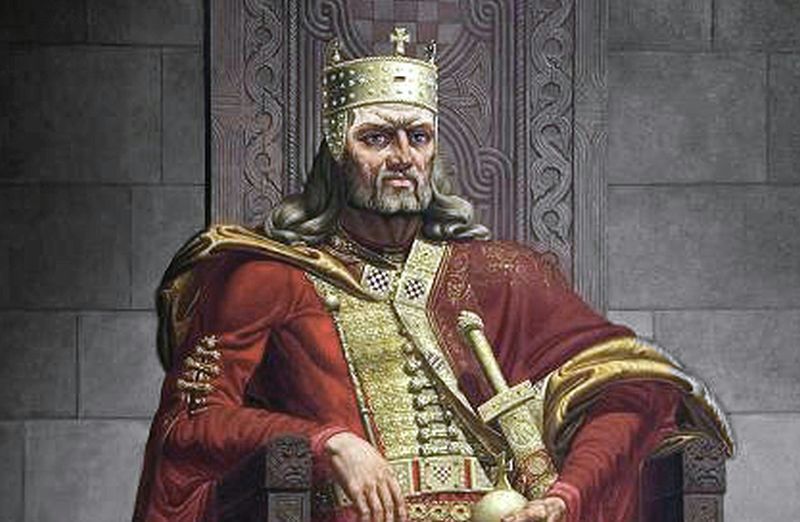
Zvonimir’s Crown began with its namesake the Croatian King Zvonimir, who reigned from 1076 to 1089. Elite Croats remembered him as a strong and self-reliant ruler by name.
It is very probable that the crown was lost when the Ottoman Turks invaded and destroyed the royal capitals of Solin and Knin in the 1520s. The existence of the Zvonimir crown from the Middle Ages is unknown.
Did You Know?
Demetrius Zvonimir was assassinated by the Croats in 1089 because they believed he had betrayed them to Rome.
4. The Crown of Boleslaw I the Brave
Year Established: 1000 AD
Origin Country: Poland
Status: Kept in the Wawel Castle
Material Used: gold
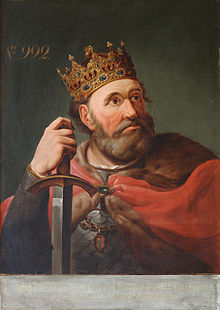
The Crown of Boleslaw I the Brave was 10 inches high, with an exterior diameter of 7.8 inches and an interior diameter of 7.3 inches, and weighed around 2.82 pounds.
Boleslaw allegedly acquired his crown at the Congress of Gniezno in the year 1000 AD from the Holy Roman Emperor Otto III.
The Boleslaw crown was lost, and a new one wasn’t constructed until King Ladislaus the Short was crowned. Therefore, the Polish monarchy remained without a crown until 1320.
Did You Know?
Following the theft of the original in 1794 by Prussian forces, a replica of the crown was built between 2001 and 2003 that was used to crown Polish kings.
3. Crowns of Silla
Year Established: 5th to 7th century
Origin Country: South Korea
Status: Kept in the Gyeongju National Museum
Material Used: Gold
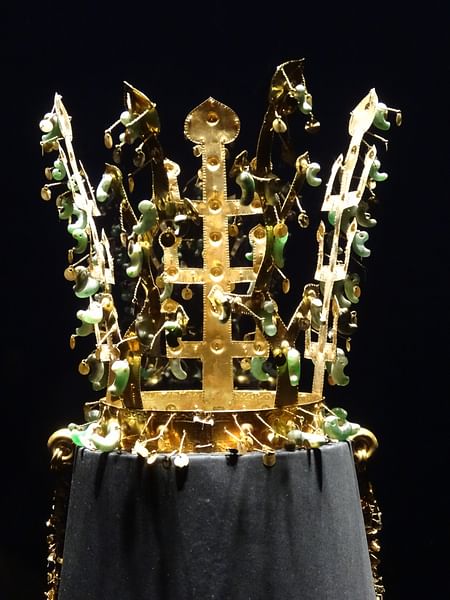
Around the 5th to 7th century, in the Korean kingdom of Silla, the Crowns of Silla were crafted. These crowns are recognized as South Korean national treasures.
A tall conical cap with openwork, a piece in the shape of a wing or butterfly that fits into the cap, and a diadem are the three elements that compose most Silla gold crowns.
Did You Know?
The five gold crowns were discovered during excavations at five royal tombs in Geumseong (modern Gyeongju).
2. The Iron Crown of Lombardy
Year Established: 4th or 5th century
Origin Country: Italy
Status: Kept in the Cathedral of Monza
Material Used: Gold
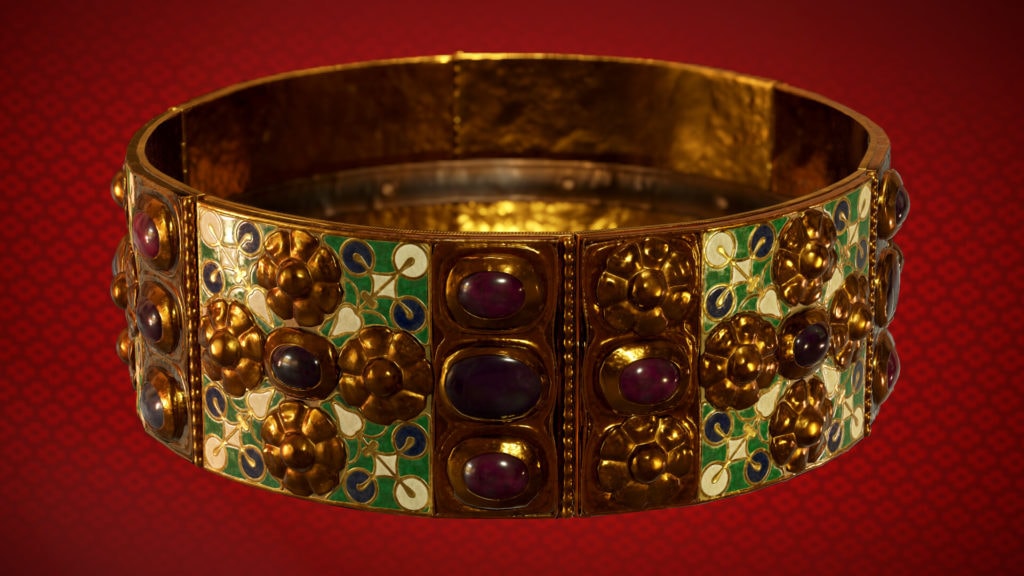
One of the first royal symbols of Christendom, as well as a reliquary, is the Iron Crown of Lombardy. It was created in the Early Middle Ages and was composed of a circlet of gold that was placed around a center silver ring that, according to mythology, was forged from a nail from the True Cross.
Six pieces of beaten gold, some of which are enameled, make up the outer circlet of the crown and are hinged together. Twenty-two relief-carved gemstones, in the shapes of crosses and flowers, are put into the piece.
Did You Know?
A symbol of both the Lombard Kingdom and, subsequently, the Medieval Kingdom of Italy, the crown came to represent both of these kingdoms.
1. Copper-Age Crown
Year Established: 4000–3300 B.C.
Origin Country: Unknown
Status: Kept in New York University
Material Used: Copper
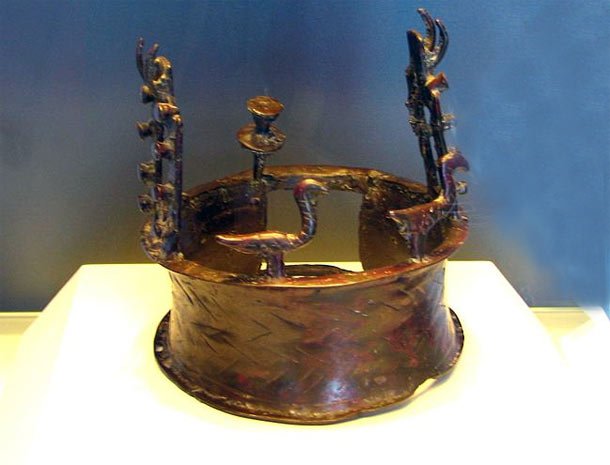
In 1961, the world’s oldest crown, known as the Copper-Age Crown, was discovered in a secluded cave near the Dead Sea. It was found in a cave in Israel’s Judaean Desert.
The ancient artifact, which was created between 4000 and 3300 BC during the Copper Age, is formed like a thick ring and has doors and vultures extending from the top.
Did You Know?
A symbol of both the Lombard Kingdom and, subsequently, the Medieval Kingdom of Italy, the crown came to represent both of these kingdoms.


